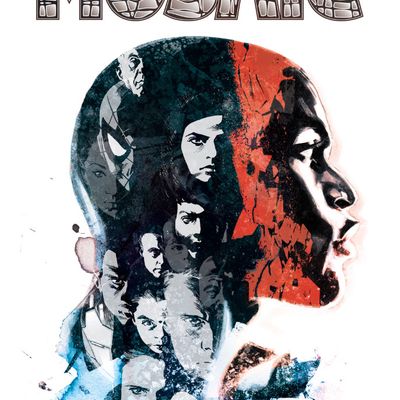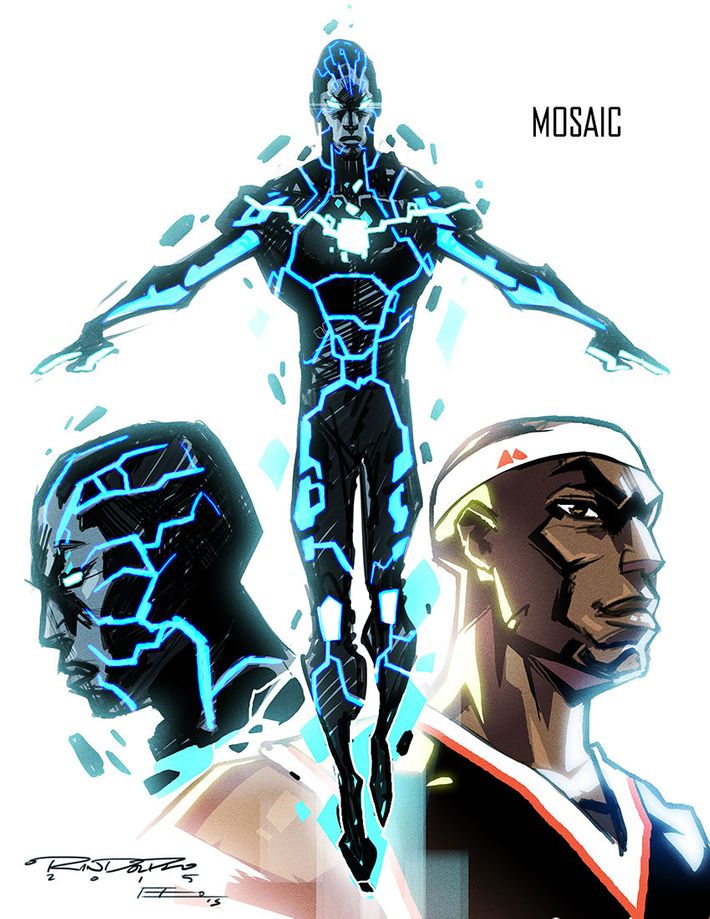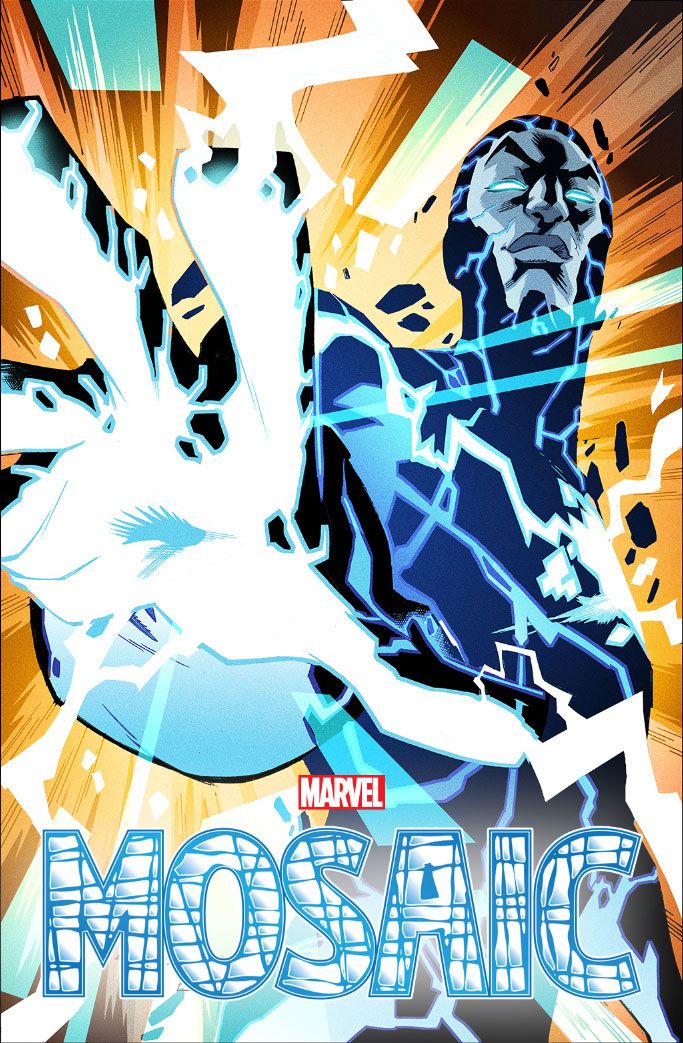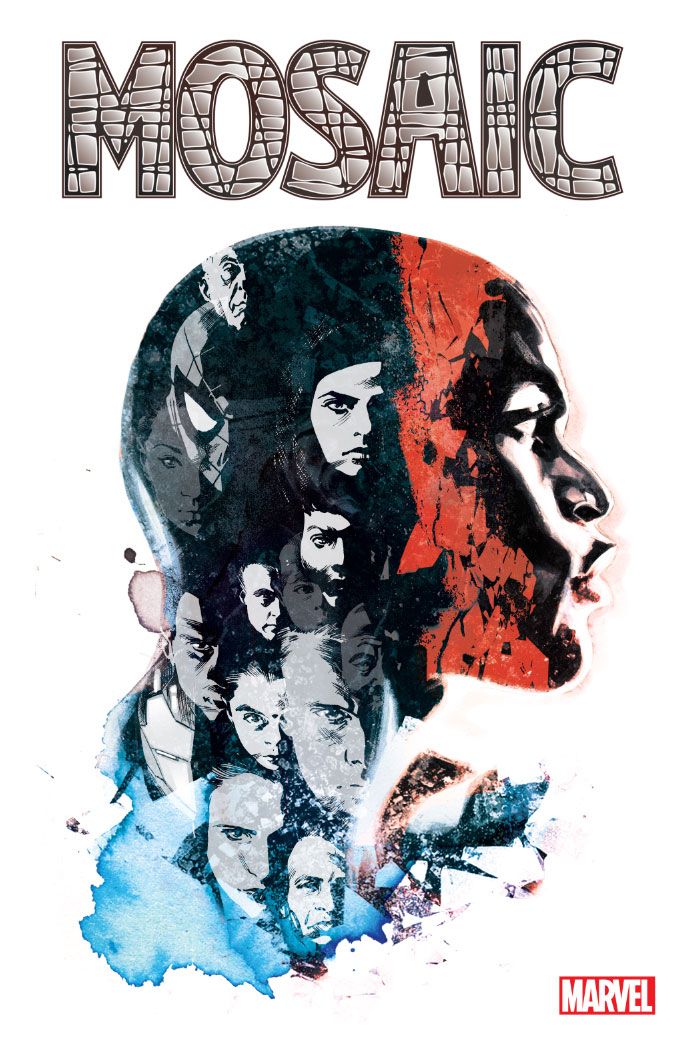
In April, Marvel Comics began teasing readers with a question: “Who is Mosaic?” The phrase appeared in a set of cryptic images featuring puzzle pieces and human faces, the final one of which mentioned the upcoming 11th issue of the publisher’s Uncanny Inhumans series. Now, we have an answer: Mosaic is Marvel’s latest antihero, who will be debuting in that issue. Then, come October, he’s going to star in his own ongoing series, written by Geoffrey Thorne and drawn by Khary Randolph.
That book, Mosaic, will follow the exploits of a man named Morris Sackett. He starts out as a beautiful and successful professional basketball player, a selfish jerk, and — unbeknownst to him — a latent Inhuman. For those not up on their Marvel lore, Inhumans are people with unrealized superpowers who only manifest their special abilities after being exposed to something called the Terrigen Mist. Once that happens to Morris, he finds he no longer has his handsome body. Instead, he’s become a free-floating entity that needs to occupy other people’s bodies in order to survive.
In addition to the ongoing series, Thorne and Randolph — who created the character — are putting out a ten-page Mosaic origin story that will be available for free on August 6 at Barnes & Noble stores. We caught up with them for an exclusive chat about the ins and outs of Morris’s powers, Quantum Leap, and their efforts to make sure Morris isn’t a stereotypical black superhero.
What was attractive about this project?
Geoffrey Thorne: I grew up on Marvel comics. They’re a large part of the reason I became a writer. To be asked to create a new character for Marvel and for that character to be this character and for him to be realized in this way? My inner 12-year-old hasn’t stopped screaming and dancing. And, not to put too fine a point on it, he’s black. I’m getting to add another black character to the Marvel universe that gave us the Black Panther, Cage, Falcon, Blade, Miles Morales, and Storm. Also, they’re paying me.
Khary Randolph: People always ask for more diversity and strong characters of color, so that is what we aim to deliver. But that aspect is just the outer layer — the more important thing is creating an interesting person that people will want to know more about month to month. Specifically as it pertains to Mosaic, the subject matter just appeals to my sensibilities. I love science fiction, I love hip-hop and I love sports, and this project has all three of these in huge quantities. I think one of my strong points as an artist is conveying energy. Which comes in handy when you are drawing a character that is literally energy. Also, they’re paying me.

How would you describe Morris’s powers?
Thorne: The baseline is Morris can take over a person’s body and essentially become them. He has access to every memory, every talent, and most important, every nuance of speech and behavior his host might have. There are no barriers when Morris takes a host. He is you. Not even a telepath could detect his presence unless he wanted them to. He cannot be detected or blocked by any conventional surveillance or defensive equipment, not even Stark-level tech. He is the perfect spy. He doesn’t exist on the “astral plane.” Morris physically takes over your body — sort of like a parasite or a virus made of energy. There are some other powers, one in particular, that I’m holding back, and limitations and drawbacks, which he and we will learn.
What are the downsides of his powers? Does something bad happen every time he occupies someone’s body?
Thorne: The biggest downside is Morris currently has no body of his own. For a world-class athlete, this is torture. Even with all his training, his athleticism is only as good as the fitness level of his host. He might know what to do, in other words, but an unfit or infirm body won’t be able to accomplish it. He must possess someone in order to get nourishment when his host eats and to keep his energy form from dissipating. He must also leave a host within a period of time before the original body begins to reject him and absorb his mind into the host’s. (How long? Wait and see.) If he stays inside too long he gets eaten and is gone for good. If he stays out too long, he drifts away to nothing.
It should be noted that, at first, Morris has no idea how his powers even work. Also, once he leaves a host, their abilities and memories immediately begin to fade. He doesn’t keep them or collect them from body to body. Not usually. There are a couple of exceptions to this that are part of the story, so I won’t say when, what or where they are.
When Morris is occupying a person, do that person’s personality and mind disappear?
Thorne: Yes. The host’s mind and personality go to sleep, essentially becoming nothing more than a hard drive to which Morris has absolute access.
Khary, what will Morris look like when he’s not in someone else’s body?
Randolph: After a lot of consideration, my solution was for him to look like a being of pure, unstable energy. He’s no longer a man in the physical sense, so my idea was to imagine the husk of what was once a man, barely containing this essence that is pouring out of him from all sides. He’s teeming with energy, hence all of the cracks and fissures. As for the energy itself, I wanted it to still feel like a Marvel character, so we’ve created these rectangular squares that radiate off of him at all times. Geoffrey has lovingly referred to them as “Kirby squares.”
What makes Morris unique in the Marvel canon?
Thorne: Morris isn’t a hero, or at least he doesn’t see himself as one. He’s not out to make the world a better place for anyone but Morris. Not at first. Nor is he a villain. He’s not a malevolent person, just extremely self-obsessed. When Peter Parker first got his powers, he spent a few weeks using them to make money and to basically get his own back from a world that hadn’t been very nice to him thus far. He gets over it with the death of his uncle and becomes the hero we all know. Morris lives in that space Peter only passed through and has no kindly Uncle Ben to teach him about power and responsibility. Morris is about Morris.
“Minority” characters are generally not allowed to have this nuance. Because they are relatively few, when they appear they have to be paragons of good or face some sort of social backlash. Morris is, frankly, more complex than that. His complexity is what makes him unique. To me, at any rate. I’m very pleased Marvel is letting me make Morris the fully rounded person that he needs to be for the story to work.

What kind of relationship will he have with the rest of the Inhumans and the Marvel Universe, in general?
Thorne: Like any of us, Morris will have good relationships with some people and crap relationships with others. Whether his friends are good guys or bad guys to the rest of the world doesn’t matter much to Morris. Some of his friends will be villains, some heroes, and some neither. Morris is his own country. Citizenship is up to him. As for the other Inhumans, that will be complex as well. Morris doesn’t really join teams, even though he spent his prior life on them. He’s not very good at taking orders from people and certainly has no respect whatsoever for people calling themselves kings and queens. Morris is an American. We don’t do kings and queens. Take that for what it’s worth.
Morris’s pre-powers body is supposed to be remarkably handsome — was there anyone you looked to as a model, Khary? Other than yourself, of course.
Randolph: Aw man, you totally took my joke! But there’s not one person it’s based on. There’s definitely a little Tyrese Gibson. But other folks, too. I didn’t want Moss to look like “generic bald black guy,” so I gave him unique features that will hopefully outlive however long my run on the series lasts.
Does Morris actually call himself “Mosaic,” or is that just the name of the series?
Thorne: Morris calls himself Moss or Morris. The name Mosaic will find its way into the story later on.
How often will he be jumping from person to person? Will it be a new one every issue? Every story arc?
Thorne: Morris will jump from body to body as he feels the need to do so. Sometimes this will mean multiple jumps in a single issue. Sometimes it means one jump spread over several issues. It depends totally on the story being told at the time.
Is this going to feel like Quantum Leap?
Thorne: No. [Quantum Leap’s] Sam Beckett was essentially an altruistic man, out to help the world even before his accident. Morris is not out to help anyone but Morris. Sam had help and friendship with Al. Morris has no one but himself. No mentor. No adviser. No team to give mission parameters. He is on his own for the first time in his life. And maybe for the rest of his life. He doesn’t really start thinking about other people as more than means to his ends until some time into the series, and even then, it’s an unnatural and uncomfortable mind-set for him to be in. He wasn’t raised to think of anyone but himself or his family as important. It will take some time for Morris to realize there are other people in the world and that they actually do kind of matter. They matter a lot.


